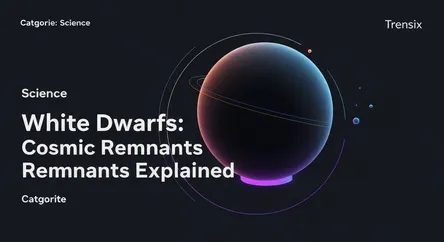Science
White Dwarfs: Cosmic Remnants Explained

Discover the secrets of white dwarfs, the dense, Earth-sized remnants of stars like our Sun. Learn about their formation and cosmic significance.
What is it?
A white dwarf is the incredibly dense stellar core remnant of a low-to-medium mass star, like our Sun, after it has exhausted its nuclear fuel. Once a star sheds its outer layers to form a planetary nebula, the hot core is all that remains. This Earth-sized object is composed of electron-degenerate matter, meaning its atoms are packed together as tightly as possible. A white dwarf no longer produces energy through fusion; instead, it shines faintly from leftover thermal energy, gradually cooling down over trillions of years until it becomes a theoretical black dwarf.
Why is it trending?
White dwarfs are a hot topic in astronomy thanks to advanced telescopes like the James Webb Space Telescope and the Gaia space observatory. Recent studies focus on analyzing their atmospheres for clues about the planetary systems they once hosted, including detecting 'polluted' white dwarfs that have consumed asteroids or planets. They are also crucial for understanding Type Ia supernovae—catastrophic explosions that occur in binary systems with a white dwarf, which astronomers use as 'standard candles' to measure the expansion of the universe.
How does it affect people?
While white dwarfs pose no direct threat, their study is fundamental to humanity's understanding of the cosmos. By observing them, scientists can test the laws of physics under extreme density and pressure, conditions unattainable on Earth. It also offers a glimpse into the distant future of our own solar system, as our Sun is destined to become a white dwarf in about five billion years. Understanding this process helps us piece together the complete life cycle of stars and the chemical evolution of our galaxy.